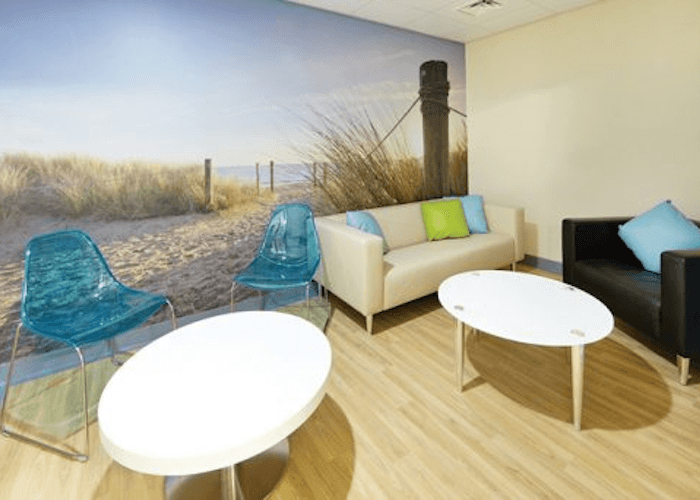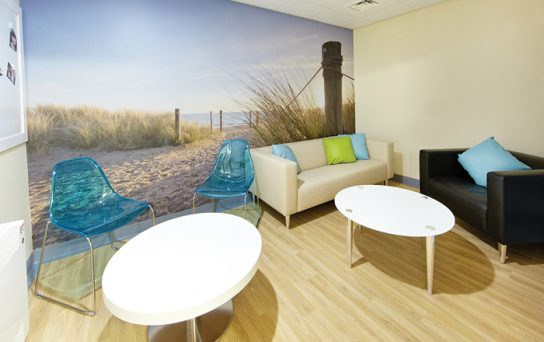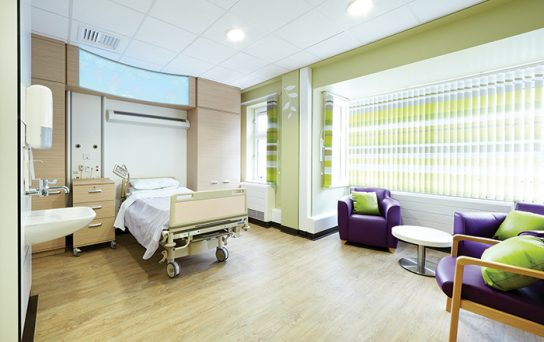
For patients who receive end-of-life care in hospital, specially designed palliative care rooms offer comfort and privacy and allow them to spend their last days as restfully as possible, in the company of those closest to them. And for their families, quiet rooms away from the sights and sounds of a busy ward or department give them the opportunity to come to terms with the loss of a loved one and begin to take the first steps of the grieving process.
When we’re creating environments that promote a positive end-of-life experience for patients and their families, there are a multitude of things to consider, but the overarching need is always comfort.
But comfort isn’t just important for patients on a palliative pathway, it’s important for those who are recovering, too. So, we started thinking. Are there benefits to creating rooms that are capable of delivering palliative care which can also be used as a comfortable place for recovering patients?
A place that doesn’t necessarily have to just mean bad news
If you were to think about what the quiet room or relative room in a hospital is most often used for, you’ll probably think somewhere along the lines of a doctor delivering bad news to a patient or to their family. Of course, there’s nothing wrong with this. Quiet rooms are a sanctuary away from the unforgiving, unrelenting business of a hospital and can be an oasis of calm for people to come to terms with bad news or, indeed, a loss.
But as well as using them to deliver bad news, quiet rooms are also places where doctors can give more positive results and, for once, be the bearers of good news.
Just imagine the overwhelming sense of relief after a long battle with illness, especially if the road to recovery has been a rocky one. Naturally, patients will want to spend time with their loved ones as they process the news, come to terms with entering this new chapter of their life and deal with the whole new range of emotions that comes with it. Being within a quiet room affords them the opportunity to focus on taking the first steps on this new path, surrounded by their family who can provide all the support they need.
We know that families will never forget where they were when the news was delivered to them that a loved one had, or soon will, pass away. Similarly, families who are given positive news after a difficult period of supporting a relative through a serious illness are likely to never forget where they were either. This is also true, if not more so, for the patient themselves. For this reason, making such environments as unmemorable as possible is extremely important and something else that we begin to consider early on in the design process. We don’t want to create an environment with imposing colours and garish graphics; we want to create an environment where the people within it can focus on the situation, not the surroundings.

Being able to use a quiet room to receive positive news can also hold benefits for other patients and their families. Taking the scenario away from the ward means that others who may not receive such a good outcome from their treatment aren’t inadvertently reminded of their own radically different situation, especially if it’s something they’re still trying to coming to terms with.
Clinical rooms which focus on comfort
It goes without saying that there are a lot of considerations that need to be made when we’re putting together the designs for palliative care rooms. Our main priority, though, is always to create an environment that will help patients to feel comfortable and supported during their final days. Two of the biggest factors that contribute towards this are privacy and having loved ones around them. But these two things are also important for patients who are in hospital recovering from a serious illness.
Private rooms, such as those that are used for palliative care, afford patients the ability to control environmental factors like temperature, noise levels and even lighting so that they can feel calm, reassured and as comfortable as possible in their precious last few days.
Allowing patients who are receiving treatment other than end-of-life care the ability to adjust these things to make the space feel more comfortable can have a significant impact on how well they recover. This idea is supported by a growing body of research which shows us that the more comfortable a person is within their environment, the more positively they respond to treatment.

Designing palliative care rooms means creating a comfortable space for patients who are entering their final days and for families who are supporting patients on the end-of-life journey. But patients who are recovering from serious illness require a reassuring and supportive space too. By creating a space where comfort can be prioritised, but clinical care can still be delivered, we can create a room that benefits every patient who uses it, whatever treatment they’re receiving or pathway they’re on.
If you’d like to find out more about how we can create rooms within your ward that can provide comfort while still facilitating clinical care, get in touch.
